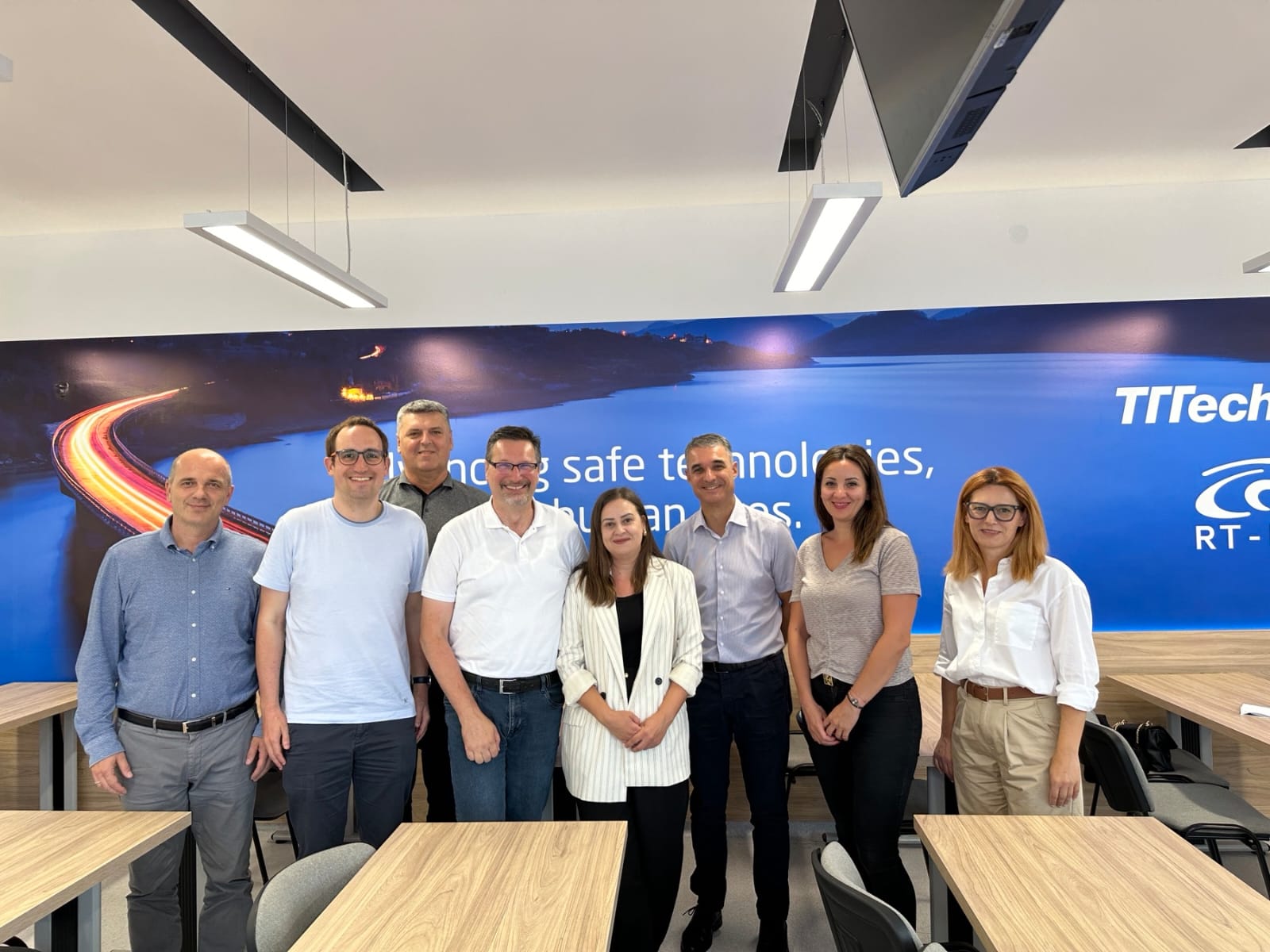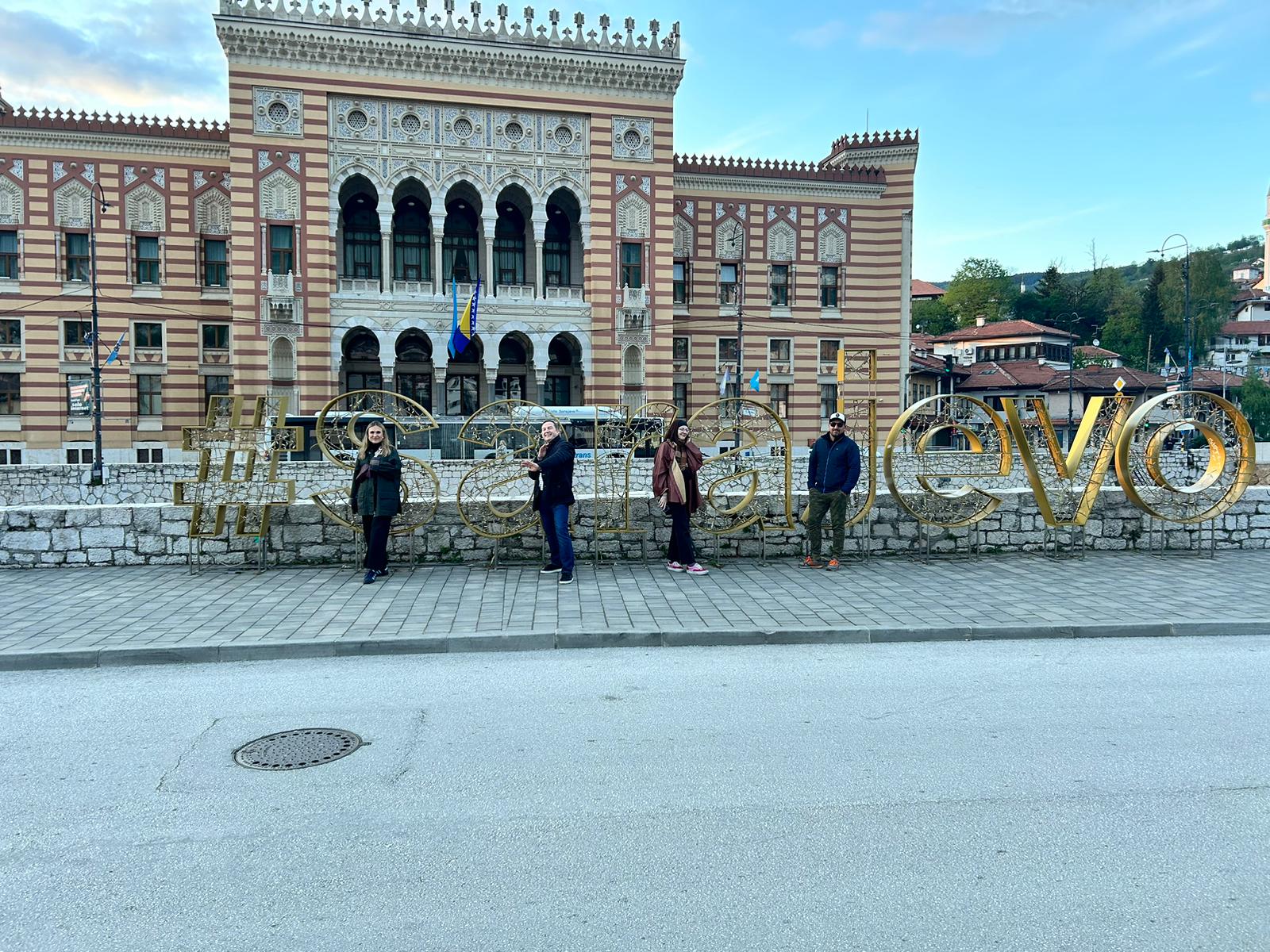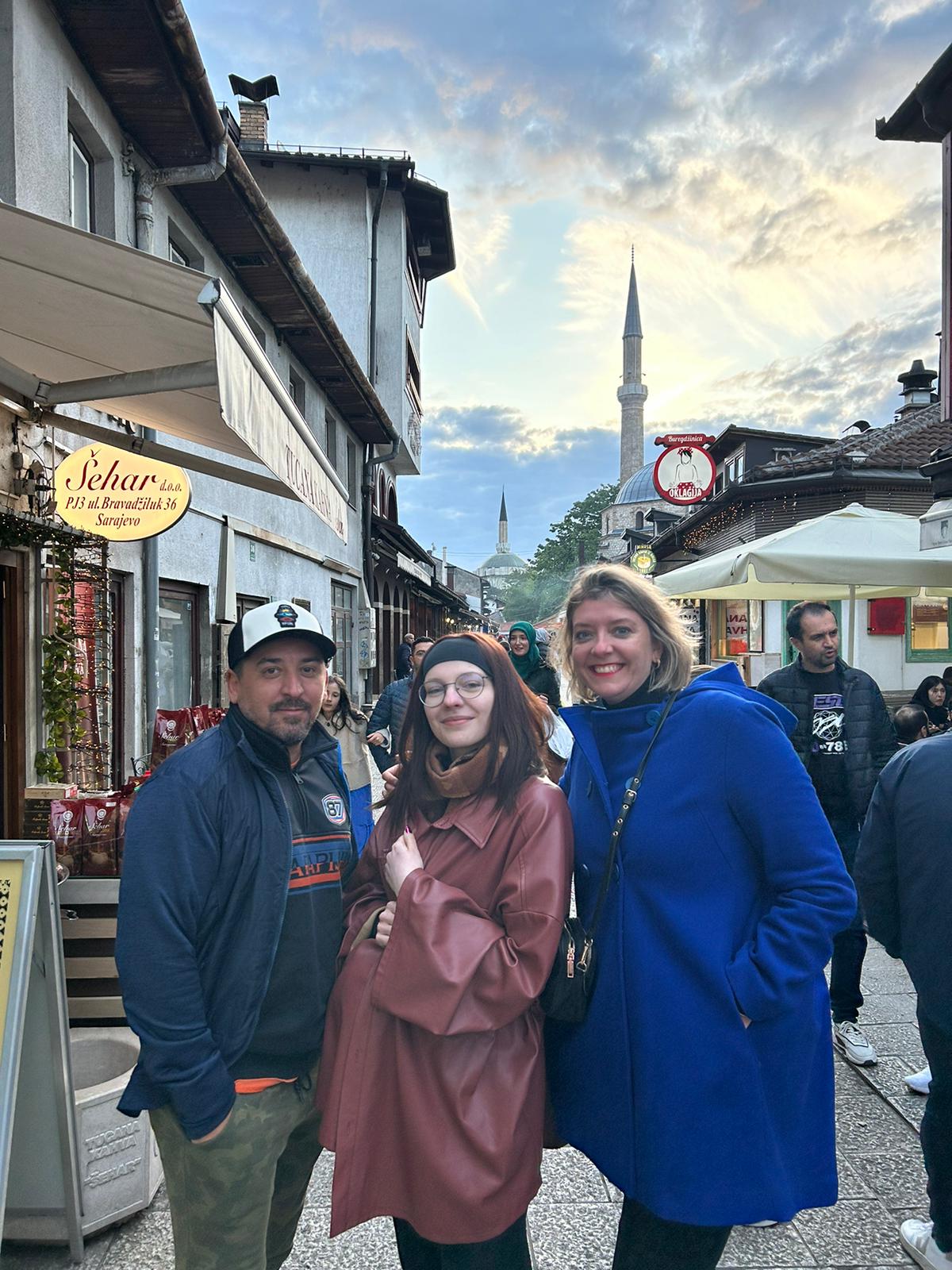Written by: Virgil Florea
In Q1 2024 alone, FundingBox has empowered digital transformation across the Western Balkans by identifying millions in funding opportunities, enabling the launch of European Digital Innovation Hubs (EDIHs), and building interconnected, high-impact ecosystems. Through tailored training programs and strategic partnerships, we’re shaping a future where digital innovation thrives.
Curious about our latest strides in innovation? Our recent initiatives are shaping the future of digital transformation in the region, and you can explore the full story right here!
The treasure chest of maximized opportunities
One of our primary focuses is aiding Digital Innovation Hubs (DIHs) in securing essential funding. By identifying diverse funding opportunities and delivering targeted training, we have championed several DIHs to optimize their grant applications and connect with partners across EU Member States (EU MMSS).
In addition to our training sessions, we have created the Grant Scan for Western Balkan DIHs in the RCC Service: Follow-up Support Programme for the Development of Digital Innovation Hubs in the Western Balkans , which provides a comprehensive overview of existing EU funding opportunities in 2024. This valuable resource helps DIHs identify the most suitable funding programs for their projects and services.
The treasure chest of maximized opportunities
One of our primary focuses is aiding Digital Innovation Hubs (DIHs) in securing essential funding. By identifying diverse funding opportunities and delivering targeted training, we have championed several DIHs to optimize their grant applications and connect with partners across EU Member States (EU MMSS).
In addition to our training sessions, we have created the Grant Scan for Western Balkan DIHs in the RCC Service: Follow-up Support Programme for the Development of Digital Innovation Hubs in the Western Balkans , which provides a comprehensive overview of existing EU funding opportunities in 2024. This valuable resource helps DIHs identify the most suitable funding programs for their projects and services.
Accelerating EU accession (by maximizing access to funding and technologies)
For instance, our recent engagements included facilitating over 50 TRAINING SESSIONS, helping DIHs understand and access various EU funding mechanisms. These sessions have not only educated participants on the available opportunities but also equipped them with the necessary skills to write compelling proposals. Our training covers critical aspects such as understanding the requirements of different funding programs, writing effective proposals, and managing funded projects efficiently.
Moreover, we have actively connected DIHs with potential partners from the EU, creating networks that facilitate knowledge exchange and collaboration. This approach ensures that DIHs are not only aware of funding opportunities but are also well-positioned to take advantage of them. A significant part of this effort is our Supportive Partners Programme, with 48 dedicated partners and growing, which brings together stakeholders from various sectors to support DIHs through mentorship, resources, and collaborative opportunities. Learn more about it here: Supportive Partners Programme.
Ticket to the TOP: supporting EDIH candidacies
Our commitment to advancing the EDIH network across Accession Countries has led to tangible success stories in Ukraine, Kosovo, and Moldova:
- Ukraine: We guided 14 EDIH candidates through the DIGITAL program application process. Thanks to our detailed workshops and support:
- 6 candidates reached the Grant Agreement Preparation (GAP) phase
- 86% achieved EDIH recognition, significantly enhancing Ukraine’s digital innovation capacity.
- Kosovo: We continued our work with Prizren DIH, now known as DIG-4K, helping them on their journey to become a recognized EDIH and strengthening Kosovo’s digital landscape.
- Moldova: Local DIHs received strategic support, case study insights, and consultations, increasing their readiness for EDIH candidacy. Our collaboration with the government aims to streamline the national call for selecting candidates.

The dots are connected: Building powerful domestic and global ecosystems
FundingBox has also played a crucial role in building and connecting ecosystems both locally and internationally. In Bosnia and Herzegovina, we collaborated with DIHs like its4Health, Digital Storm, IDEMO & Industrial Hub to create a thriving ecosystem. By organizing key workshops and facilitating connections with EU partners, we have strengthened the local innovation framework.
Facilitating connections through our activities in Bosnia and Herzegovina:
- Strategic marketing support: Recognizing the importance of visibility and branding, we provided strategic marketing support to local DIHs. This included training on digital marketing strategies, branding, and communication to enhance their outreach and engagement with potential partners and funders.
- Creating domestic ecosystems: Our efforts also focused on building a cohesive ecosystem by stimulating collaboration between different stakeholders, including academia, industry, and government. This holistic approach ensures a supportive environment for innovation and growth.
- Exposure to international networks: We provided DIHs with exposure to international networks through events such as the Madeira Digital Transformation Week. During this premier event, we facilitated four workshops where DIHs had the opportunity to speak and engage with key stakeholders from the European Commission, government, academia, and industry, in order to discuss and promote digital transformation strategies.
Want the inside story? Peek at our LinkedIn post!

- The Support Programme for DIHs by RCC is another example where we took the lead and offered a unique platform for DIHs to engage with international networks, enhancing their visibility and collaboration opportunities on a global scale.
- Study visits: We facilitated study visits for guests from Digital Storm DIH, DIH IDEMO Bosnia and Herzegovina, and Deutsche Gesellschaft für Internationale Zusammenarbeit (GIZ) GmbH to BIBA – Bremer Institut für Produktion und Logistik and Mittelstand-Digital Zentrum Bremen-Oldenburg. These visits included insightful demonstrations and valuable knowledge exchanges. Highlights included introductions to DIGITAL HUB INDUSTRY Bremen, AI applications for autonomous driving and transport route optimization, and green hydrogen solutions for industry through the hyBit project. Additionally, we organized a study visit to DIH IDEMO in Banja Luka, where Markus Knak from BIBA DIH had the opportunity to gain firsthand experience of the operations of these well-established hubs. These visits underscored our dedication to expanding networks, implementing cutting-edge technologies locally, and supporting the growth and development of DIHs.


Moments that mattered: Highlights from major events
Our participation in significant events underscores our proactive engagement with the innovation community:
- Ukraine (February 2024):: Our journey in Ukraine began with a three-day workshop in Lviv, where FundingBox provided comprehensive training on DIH management, accessing funding , and communication strategies. This workshop laid the groundwork for supporting 14 consortia in their applications for EDIH status. Following the results, we are now assisting six of these consortia with the Grant Agreement Preparation (GAP) phase. For those not funded, we are helping them refine their value propositions to apply for new funding sources, both public and private.

- Bosnia and Herzegovina (March-June 2024): Our involvement in the Digital Europe Signing Ceremony in Sarajevo included comprehensive workshops on EU funding and strategic marketing. These sessions, attended by over 70 local businesses, were crucial in advancing Bosnia’s digital transformation. Our FundingBox experts provided hands-on training and real-world examples to illustrate effective strategies for accessing and utilizing EU funds.
Want the inside story? Peek at our LinkedIn post!We also participated and supported the DIH DAYS, a major event in Sarajevo that brought together digital innovators and stakeholders. During this event, our representatives collaborated with EBRD and EIT Manufacturing to present various funding opportunities. The event featured networking sessions that facilitated collaboration among attendees, and our team led discussions on international cooperation and funding models, further supporting DIHs on their journey to success. Want the inside story? Peek at our LinkedIn post!
Another notable event was the DIH Forum, also held in Sarajevo. This gathering focused on the exchange of digital ideas and collaboration between businesses of all sizes. Key presentations from the EU Delegation and GIZ B&H highlighted digital opportunities in Bosnia and Herzegovina. Our team, including presented the DIH concept and its impact on digital transformation, underscoring the importance of collaborative efforts and shared resources in driving innovation.
Want the inside story? Peek at our LinkedIn post!

- Moldova (June 2024): During the Moldova Digital Summit 2024, FundingBox hosted a workshop focused on establishing European Digital Innovation Hubs (EDIHs) and leveraging EU funds from the Digital Europe Programme. We shared success stories from Romanian EDIHs, offering practical insights about how Moldovan entities can participate in the national preselection and be eligible for EU funding. Our workshop also included interactive sessions where participants could discuss their challenges and receive personalized advice from our experts. Want the inside story? Peek at our LinkedIn post!

- Serbia (June 2024): At the 8th Forum of Advanced Technologies in Niš, our team highlighted the importance of academia-industry collaboration. We presented advanced funding mechanisms like Cascade Funding and our flagship OnePass tool, benefiting over 30 Serbian companies. Our presentation emphasized the need for a collaborative approach to innovation, where academia and industry work together to develop and commercialize new technologies. Want the inside story? Peek at our LinkedIn post!
Numbers don’t lie: the metrics of our success
Our initiatives in Q1 2024 have yielded significant outcomes, which can be summarized in the following chart:

Bringing it all together
FundingBox’s efforts in Q1 2024 have been pivotal in driving innovation across the Western Balkans. Our strategic initiatives have not only empowered DIHs to secure funding but also enhanced their capabilities to innovate and collaborate on a local and international scale.
Our team: Maria Roca, Magdalena Czerny, Graciela Garrido, Mayte Carracedo, Virgil Florea, Antonio Jose Castro and Brais Fernandez thoroughly enjoyed their visits to these countries, taking advantage of their free time to explore local culture, cuisine, and landmarks. This blend of professional engagement and personal exploration has enriched our understanding of the regions we support, further strengthening our commitment to innovation and growth in the Western Balkans.


